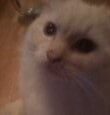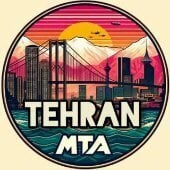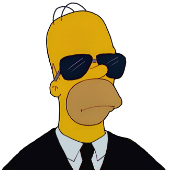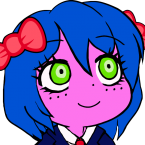Leaderboard
Popular Content
Showing content with the highest reputation since 31/12/24 in all areas
-
Hello MTA players, I realised that I had to create this post because I got a lot of feedback, I stopped all my activities in MTA and I don't play MTA anymore because I had to make some changes in my life and change my life direction, I saw MTA in 2010 and I started playing, during this time I made very good friends, developers and players, so I would like to thank you all endlessly, 3 months ago I stopped all my activities in MTA, but I was still receiving a lot of message requests (for paid development or other issues) after that I gave everyone goodwill feedback, but I had to stop this because I was receiving a lot of messages from MTA servers and players, Anyway I have to say that I will miss all MTA players and developers, I will visit from time to time but I won't have much time for that, for some players who will try to contact me I have to say that I don't have a discord server and I don't answer private messages, I think you will be understanding and thanks for that... I have reached the end of my career in MTA. I have worked voluntarily on many servers and participated in numerous projects. I have sold all the projects I worked on, both paid and free, and I would like to announce that I will no longer be continuing my projects. I had a great time on many servers, and for that, I want to express my gratitude. Finally, I am deeply grateful to the valuable members of the MTA team, as they have helped me in many ways. Some of them include @Sarrum, @Vinyard, @Citizen, @IIYAMA, @AlexTMjugador, and myonlake (Patrik). I will miss you, guys!6 points
-
Hey MTA community! I’m excited to release the latest version of the In-Game Lua Editor for MTA:SA, now with even more powerful features to enhance your development experience directly inside the game. What’s New in v3.0: Create Resources directly in the editor, with the ability to choose the folder (e.g., [ADMIN], [GAMEMODES]) for resource creation. Rename and Relocate Resources in one action, making resource management easier. Delete Resources with a confirmation dialog to avoid accidental deletions. Create and Edit HTML Files alongside Lua files, allowing you to handle both HTML and Lua resources directly in the game. Base Path System to restrict developers to specific folders, making it perfect for team organization and isolating workspaces. Function Blacklist: Automatically block dangerous functions like loadstring, setAccountPassword, removeAccount, and others for added security. In-Panel Notifications to give real-time feedback for every action performed in the editor. Security Enhancements: Full ACL Permission System to control access and operations. Activity Logs with SQLite tracking every create, edit, delete, and rename operation. Path Protection and additional security measures to prevent risky operations. Video Demo: Watch on YouTube Download: Download the Resource Here GitHub Repository: Visit the GitHub Repository How it Works: The In-Game Lua Editor allows you to browse, create, edit, and delete Lua and HTML files all in real-time directly inside MTA:SA. No need for external editors or FTP uploads, and no server restarts required. Installation Instructions: Download the resource and add it to your server. Grant "Admin" ACL permissions to the resource. Edit the permissionACL variable in editorS.lua with your admin group. Use the /editor command in-game to open the editor. Let me know your thoughts and feedback! This tool has saved me countless hours, and I hope it helps improve your development process as well. More updates and contributions coming soon! Developed by BranD - Trident Sky Company5 points
-
Hello all. The holiday season is finally here, and we have prepared a more compact summary post for you than usual. Please read on to see, what we have been up to lately. GTA VI The upcoming year will bring us the next game from the Grand Theft Auto series - GTA VI. Planned to launch in Fall 2025 on consoles, it will likely arrive on PC as well, just some months later. The second trailer for GTA VI is also rumoured to be shown soon, with some elaborate fan theories backing these rumours. Will the game be good? Only the time will tell, but looking back, there was not a major GTA game release from Rockstar Games that was bad (for the sake of this argument, let's consider the Trilogy as a minor release ). That alone makes it worth to look forward to it, and it will be also nice to re-visit Vice City similar to how we did it with Liberty City and San Andreas. MTA Status and Updates Not much to report in regards of MTA - we have been focusing on improving various parts of our infrastructure, which is not immediately visible at first glance. Still, since there are many areas that need the attention, there is a lot of work involved. Thankfully, CiBeR, Botder, Lopsi, Dutchman and others have been looking into it. Thanks to the hard work done by our Helper - FileEX, we have also refreshed the Lua syntax highlighting system on our Wiki. For a long time it was unmaintained, causing many of the recent MTA scripting functions and events to be not correctly highlighted in the code snippet examples on the wiki. This has changed though, and it should be working much better now. We have been also tinkering with our #MTASpotlights hashtag on X / Twitter. We are still exploring this idea, but nonetheless, thank you for your submissions so far. If you would like to share some media that we could promote, you can do so on our Discord, just please make sure to read the guidelines beforehand. And, naturally, there have been additions to the mod's source code now and then, bringing in new scripting functions and bugfixes. Similarly, we have been pushing those as client updates for you, also now and then. Player Counts and Other Statistics Type Amount of players Date / Time Recent peak number of concurrent unique players 24,808 players 2024.12.22 (at 18.13 GMT) Highest recorded number of concurrent unique players 52,098 players 2020.04.02 (at 18.00 GMT) Recent number of daily unique players 95,445 players 2024.12.15 (Sunday) Highest recorded number of daily unique players 185,818 players 2018.02.03 (Saturday) Recent number of monthly unique players 478,736 players September, 2024 Highest recorded number of monthly unique players 805,903 players January, 2018 For a mod for a game that is nearly 20 years old now, these are fairly good numbers. Smaller than last year, but still impressive. We are glad that you are still with us. MTA:SA version or series Percentage of players using that version or series as of 24th of December, 2024 1.6.0 99.5% 1.5.9 0.4% <1.5.9 0.1% Also, as of 24th of December, 2024: there are over 90,000 members on our Discord server, we have got 13,790 followers on X/Twitter, 58,000 users follow our Facebook fanpage , and our Steam Community group has nearly 50,000 members. --- To end this post on a high note, we would like to take this moment to wish you all Happy Holidays and a Happy New Year. Enjoy the Season and take care. -MTA Team4 points
-
Tired of San Andreas water that looks like someone spilled green paint and called it “good enough”? Meet this shader: water so realistic, you'll forget you're in a 22 year old game. Enjoy ripples, reflections, and surface waves that almost make you wish GTA had fishing. Boats finally look like they’re actually in the water not floating on radioactive soup. Best part? It’s fully customizable tweak the look, the color, the movement, or make the water as cursed as you want. Plus, it’s at least kind of optimized to run smoothly on hopefully most rigs, so you won’t need a NASA PC to enjoy the water. Just install it, and watch your players get distracted and drive off a pier. https://community.multitheftauto.com/index.php?p=resources&s=details&id=190074 points
-
MTA UI Editor is a project created with the goal of making interface creation for Multi Theft Auto (MTA) much easier and more accessible. The editor provides a dedicated visual application for building interface windows for MTA, supporting both DxDraw-based interfaces and MTA’s native UI system. With it, you can visually design your interfaces and export them already prepared for direct use in your MTA resources, saving a significant amount of development time. This is the first version of the project, so some configurations may still be inconsistent or incomplete. If you encounter any issues, unexpected behavior, or have suggestions for improvements, please open an issue on the project’s GitHub repository. Feedback from the community is extremely important to help improve the tool. Requirements Windows .NET Framework 4.7.2 Open Source The source code is completely open and free. Anyone is welcome to modify it, improve it, or contribute to the project in any way. Download: https://github.com/was547/MTAUIEditor/releases Official Repository: https://github.com/was547/MTAUIEditor Picture: https://ibb.co/LXYgXdqV I don't know if I have published in the right place on the forum, sorry if this is the wrong category for this kind of resource, greetings!3 points
-
3 points
-
-> develop and sell cheats for players to abuse in servers -> develop and sell anti-cheat for servers to defend from cheating players -> win-win with both sides3 points
-
We are planning to open source Sphene around Q4 of 2025. I'd like to set some expectations: Sphene is still heavily in development, by no means will Sphene be something you can just run and enjoy on a server. While a lot of features have been added to Sphene, a lot of the storyline is not fully playable yet. There are still a lot of glitches, and missing functionality. You WILL run into major issues. We are working through some of the last hurdles that kept us from open sourcing the project. We will only provide support on getting Sphene to run to those with clear intent to help its development. By open sourcing the project later this year, we hope to accelerate its development. We hope to work together as a community to better understand how the underlying game code operates and how to implement missing functionality into Sphene. We look forward to working together with all of you!3 points
-
This fan-made list features free, open-source, popular and reputable Multi Theft Auto resources containing Lua scripts that are not compiled or obfuscated. The goal is to provide a simple starting point for developers who want to learn from high quality code, reuse well maintained systems and contribute to projects that benefit the entire community. All resources included here are publicly available, actively used by players or servers, and shared with the intention of supporting collaboration, transparency and better development practices. Anyone is welcome to suggest additions or improvements so the list can stay accurate and useful for newcomers and experienced developers alike. The Multi Theft Auto server comes with a pack of official resources preinstalled. The full list of these default resources (and more information) is available on this MTA Wiki Article. Highlights: Map Editor Freeroam "play" gamemode Race gamemode Handling editor "hedit" Map fixes Scoreboard (TAB player list) Country of IP Address Admin Panel Performance Browser The list of the community/fan-made MTA resources is hosted on the following Google Spreadsheet for ease of maintenance and accessibility for everyone. https://docs.google.com/spreadsheets/d/1bbr-cXRvWQuyaNx0KtI2Imk4bD0UTWKxx0x8sh2FGKM/edit?usp=sharing Want to suggest a change or addition to that list? Reach out to us on the MTA Discord or here on the forums. It helps if you share your resource on #showroom (MTA Discord), community.multitheftauto.com, forums 'Resources' section, etc...2 points
-
Sphene is now officially open source! https://github.com/sphene/sphene-mta Excited to work with all of you, to turn this highly experimental pile of trash into something beautiful! Remember, Sphene historically has been very experimental. Many different approaches were tried and researched and that has left a lot of experimental, legacy and unfinished code. It's not the most glamorous, but we're still proud of it! Together we'll refactor the legacy code, we'll finish the unfinished pieces and we'll work through all the large problems that are ahead of us. Repository wiki will be filled with information, and lists (current states of each mission, etc) in the coming days. REMEMBER! Sphene is NOT production ready. We will only help those who want to contribute to our development with setting up their local development versions.2 points
-
I am working with Cursor. Which is a fork of Visual Studio Code modified with AI in mind. It is my daily driver. The free version should give you enough monthly requests to finish your script. An no this is not a stupid AI, it is a optimised version for coding after all. You can even choose which AI you want to use, but some advanced may be behind a paywall.2 points
-
PARKING METER SCRIPT COMPATIBLE WITH THE NEWEST OWLGAMING VIDEO SHOWCASE INTERESTING FEATURES OF THIS SCRIPT: dxDraw UI – modern and user-friendly display (like a real parking meter). Hourly parking system – players can choose how many hours they want to park up to 24 hours (to prevent unrealistic over-parking) Dynamic price calculation – price is automatically calculated based on time. Active/expired parking check – players can extend their active parking or start a new one. Sound effects – confirmation, payment. and error sounds. MDC integration – all payments and parking data are stored and then shown in MDC. Multiple parking zones – you can add unlimited zones and meters via config file. PAYHIP LINK If you have any questions, feel free to text me on Discord! (fajlyp)2 points
-
MTA:SA - Claire Anticheat Claire is a modular, lightweight anticheat resource for MTA:SA, designed to improve the integrity and fairness of servers. Its core philosophy is simple: organize detections into clean, independent modules, make them easy to configure, and build an open platform that others can expand and improve. Claire runs silently in the background, acting as a guardian layer — constantly monitoring player behavior, network conditions, and client-side integrity without interfering with gameplay or degrading performance. Its design favors discretion and precision, targeting cheats without disrupting legitimate users. If you're looking for a solid, customizable way to secure your MTA:SA server, try out Claire. Why does it matter? By being fully open-source, Claire gives server owners an accessible and transparent tool to detect common exploits and improve their server environment. But more than that, it invites collaboration. The idea is that, together — through testing, feedback, improvements, and shared knowledge — we can create a more solid, trustworthy anticheat resource that benefits the entire MTA community. Current features Claire currently includes over 20 independent detection modules, covering movement, combat, environment manipulation, network spoofing, and more. All detections are modular, configurable, and designed to operate silently in the background with minimal performance impact. False positives are rare thanks to tolerance-based logic, score systems, and heuristic analysis. Overall reliability across all modules is expected to be around 95%, all features are listed at our GitHub page. Contributing Claire is an open-source project — contributions are welcome! Feel free to contribute with PRs, reports, or suggestions at our GitHub page. You can also reach out to us on Discord. Download Download from MTA Community: latest release - 1.1.5 from 2025/04/22 Download from GitHub: latest release - 1.1.5 from 2025/04/22 Please check our GitHub page before downloading it, I'm open for suggestions.2 points
-
2 points
-
It is indeed a kind of attack. It means that the player is able execute clientside-code on demand. The attacker is triggering 'known generic events' which might be handled by the server. The ones that are unknown are in your logs, the ones that are known and trigger able are not. But that does not mean that the ones that did trigger didn't cause unwanted results. You might want to consider to restart the resources, just to make sure there is no memory leak. The event which AngelAlpha mentioned can indeed help with detecting that kind of attacks. As an extend you can also add a honeypot, which in this case are 'unkown' events for your server but know for other servers. When a player uses this kind of attack again, you can ban them automatic. You might want take a closer look at your logs for candidates (for example money related). There is also this event: https://wiki.multitheftauto.com/wiki/OnPlayerTriggerEventThreshold But be careful with automating things, always test these kind of stuff or you might accidentally nuke your own player base.2 points
-
We have an announcement to make regarding certain services and technologies, like "Cloud Gaming" platforms and various cloud / cloud VM and hypervisor based services and software. Unfortunately, the majority of such services can no longer be used with MTA starting today. After observing a growing trend of abuse, such as server ban evading (serials related) we have enabled the same type of security, known as MTA serial verification - which usually applies to the most common consumer VM software - to all VM types and cloud services that we know of. This means that the procedure from https://updatesa.multitheftauto.com/sa/trouble/?tr=serial-validation must be followed on all relevant services, not just the aforementioned. Because most cloud & VM hosting services won't provide users access to the host machine (that hosts the VM), we expect that most "cloud gaming" users will no longer be able to play MTA using said service. Not that MTA is an attractive game to play in cloud gaming though, we advise you to use MTA like a normal user (on your own PC) and understand that we care about servers being able to reliably ban players. Cloud gaming, for instance.. would constantly offer you a new so-called environment, allowing infinite serial swaps, making you hard to ban. It's possible for some people still being able to use relevant services, as these measures will only apply to newly generated MTA serials (not retroactively). This is intended. This topic is also relevant to the "There was a problem validating your serial" error and "Banned by MTA" with reason PROHIBITED VM TYPE / SECURITY VIOLATION1 point
-
Yeah, I worked on something similar some time ago, but I ran into many challenges when converting Figma designs into MTA Lua scripting. While the editor does offer a way to create layouts based on Figma templates, that approach is still very limited and quite basic. Because of that, I decided to build this app. It allows you to design the entire interface directly within the application and export a complete, ready-to-test MTA resource with ease. Thanks for your comment!1 point
-
Really cool project! It's nice to see someone putting effort into tooling for MTA. The community really lacks this kind of stuff and it's a shame these posts don't get more attention. I'm actually working on something similar myself, a direct converter for developers that goes from Figma to MTA. You design your UI in Figma, tag your layers with suffixes like _checkbox, _image, _button, etc., and it exports the whole thing ready to use. Different approach but same goal: making UI development less painful. Good luck with the project, hope it gets the traction it deserves.1 point
-
Resursa este: usor de folosit scurta si la obiect cel mai important sigura impotriva codatilor (daca nu aveti cumva un server asa puscat ca au acces si la astea) Ce ofera: functie setPlayerData functie getPlayerData removePlayerData sendDataToClient Versiune 0.0.1 https://community.multitheftauto.com/index.php?p=resources&s=details&id=189601 point
-
Hello, when I reviewed your code I came across many issues, and I fixed them through testing. You can check again if you’d like. Let me tell you about the changes I made: The requested "proper zombie system" is now ready: Uses a single timer Controlled animations Smooth flow Performance optimized function findRotation(x1, y1, x2, y2) local t = -math.deg(math.atan2(x2 - x1, y2 - y1)) return t < 0 and t + 360 or t end local zombies = {} function createZombie(x, y, z, firstTarget) local zombie = createPed(0, x, y, z, 0, true) zombies[zombie] = { target = firstTarget, state = "spawning", lastAnimation = nil, spawnTime = getTickCount(), updateDelay = getTickCount() } setPedAnimation(zombie, "ped", "getup_front", 2000, false, true, true, false) setTimer(function() if isElement(zombie) and zombies[zombie] then zombies[zombie].state = "idle" end end, 2000, 1) end function setZombieAnimation(zombie, anim) if not isElement(zombie) or isPedDead(zombie) then return end local data = zombies[zombie] if not data then return end if data.lastAnimation == anim then return end setPedAnimation(zombie) if anim == "idle" then setPedAnimation(zombie, "ped", "WALK_drunk", -1, true, true, true, false) elseif anim == "chase" then setPedAnimation(zombie, "ped", "run_fatold", -1, true, true, true, false) elseif anim == "attack" then setPedAnimation(zombie, "medic", "cpr", -1, true, true, true, false) end data.lastAnimation = anim end function updateZombieState(zombie, data) if not isElement(zombie) or isPedDead(zombie) then zombies[zombie] = nil return end if not isElement(data.target) or isPedDead(data.target) then data.target = findNearestPlayer(zombie) if not data.target then data.state = "idle" return end end local tx, ty, tz = getElementPosition(data.target) local zx, zy, zz = getElementPosition(zombie) local distance = getDistanceBetweenPoints3D(tx, ty, tz, zx, zy, zz) setElementRotation(zombie, 0, 0, findRotation(zx, zy, tx, ty), "default", true) if distance <= 1.5 then if data.state ~= "attack" then data.state = "attack" setZombieAnimation(zombie, "attack") end elseif distance <= 50 then if data.state ~= "chase" then data.state = "chase" setZombieAnimation(zombie, "chase") end local angle = findRotation(zx, zy, tx, ty) local moveX = math.cos(math.rad(angle)) * 0.1 local moveY = math.sin(math.rad(angle)) * 0.1 setElementPosition(zombie, zx + moveX, zy + moveY, zz) else if data.state ~= "idle" then data.state = "idle" setZombieAnimation(zombie, "idle") end end end function findNearestPlayer(zombie) local nearestPlayer = nil local nearestDistance = math.huge local zx, zy, zz = getElementPosition(zombie) for _, player in ipairs(getElementsByType("player")) do if player ~= zombie and isElement(player) and not isPedDead(player) then local px, py, pz = getElementPosition(player) local distance = getDistanceBetweenPoints3D(zx, zy, zz, px, py, pz) if distance < nearestDistance then nearestDistance = distance nearestPlayer = player end end end return nearestPlayer end function updateZombies() for zombie, data in pairs(zombies) do if data.state == "spawning" then if getTickCount() - data.spawnTime > 2000 then data.state = "idle" setZombieAnimation(zombie, "idle") end else if getTickCount() - data.updateDelay > 100 then updateZombieState(zombie, data) data.updateDelay = getTickCount() end end end end local updateTimer = setTimer(updateZombies, 200, 0) addEventHandler("onClientElementDestroy", root, function() if zombies[source] then zombies[source] = nil end end) addCommandHandler("zombie", function() local x, y, z = getElementPosition(localPlayer) createZombie(x, y + 4, z, localPlayer) end)1 point
-
Hello guys! So after many years of OwlGaming going down, is there any public and published English Roleplay server like OwlGaming used to be? that has a playerbase so we can play on? This is the best server and best game I've played for years and I'm really looking for something good, if you guys could help I'd be more than happy.1 point
-
The arms dealer script is something I made recently, this script can be used in different game modes. Dealers can be found in various locations around Los Santos. Here's a preview video For more information, feel free to join my discord server: https://discord.gg/Nex7e6JUhe Discord account is mehdi46641 point
-
eyvallah o kadar uğraşamam olmuyorsa olmuyordur bir şey yapmışsın ama anlayamıyorum o kadar kod bilgim yok. oyunda açtıktan sonra silah değiştiremiyorum ve sesler gelmiyor silahtan1 point
-
I am the owner of the Tehran MTA server with IP 5.57.39.170. I wanted to register my MTA server on this account. If I need a license, let me know and I will send it to you.1 point
-
Witaj w nowej erze MTA:DAYZ! Przedstawiamy serwer MTA:DAYZ – The-DayZ, tworzony przez Trust & Machin. Projekt powstawał przez rok, jest w pełni autorski, pisany od zera bez użycia gotowych rozwiązań. Premiera planowana na zimę tego roku . Zobacz zwiastun serwera Dołącz do naszej społeczności na Discordzie ━━━━━━━━━━━━━━━━━━━━ Dlaczego warto wybrać nasz serwer? Każdy system został stworzony z myślą o graczach, zoptymalizowany i dopracowany, aby zapewnić stabilną i wciągającą rozgrywkę. Chcemy zaoferować coś unikatowego, nie kolejną kopię istniejących rozwiązań. ━━━━━━━━━━━━━━━━━━━━ Interfejs dostosowany do potrzeb gracza: • Wszystkie statystyki w jednym miejscu • Historia punktów premium i punktów gry • Przejrzysty poradnik, ustawienia bindów, FPS i audio • Możliwość personalizacji celownika oraz korzystania z kodów polecających • Lista osiągnięć, które możesz zdobywać podczas gry ━━━━━━━━━━━━━━━━━━━━ • Poziomy grup odblokowujące kolejne funkcje, m.in.: – własny TAG na czacie – blip lokalizacji śmierci towarzysza na mapie – bonusy medyczne i inne taktyczne wsparcie • Ranking grup — na podstawie łącznych statystyk wszystkich członków grupy, takich jak zabójstwa, czas przeżycia, tworzymy dynamiczny ranking, który pozwala na rywalizację między zespołami i podkreśla najlepsze drużyny na serwerze ━━━━━━━━━━━━━━━━━━━━ Wprowadziliśmy bezpieczny system wymiany, który pozwala handlować nawet offline, co poprawia komfort rozgrywki i zmniejsza ryzyko oszustw. ━━━━━━━━━━━━━━━━━━━━ W grze spotkamy legendarnych bossów, w tym Groundera — przeciwnika, który potrafi tworzyć falę uderzeniową, podrywającą graczy i utrudniającą jego pokonanie. ━━━━━━━━━━━━━━━━━━━━ System craftingu pozwala na tworzenie unikalnych przedmiotów u wybranych NPC. Daje to możliwość zdobycia legendarnych rzeczy dostępnych wyłącznie poprzez tworzenie ich samodzielnie. ━━━━━━━━━━━━━━━━━━━━ Bazy zapewniają bezpieczne miejsce na Twoje przedmioty: • Możliwość ich zakupu za walutę premium lub zdobycia za punkty gry – dbamy, aby nie promować P2W • Rozbudowany system logów oraz szczegółowe nadawanie uprawnień – możesz przydzielać różne poziomy dostępu poszczególnym graczom, np. dostęp do konkretnego pokoju lub tylko do małego namiotu. W ten sposób poznasz ich, zanim dasz pełny dostęp do bazy. ━━━━━━━━━━━━━━━━━━━━ Na mapie pojawiają się rozbite pojazdy, które można przeszukać i zdobyć cenne łupy. Crashe wyróżniają się dużą ilością unoszącego się dymu, co ułatwia ich znalezienie. ━━━━━━━━━━━━━━━━━━━━ Ekwipunek został zaprojektowany tak, aby był prosty w obsłudze, a jednocześnie oferował przydatne funkcje: • Podgląd zdjęcia i opisu przedmiotu • Możliwość szybkiego zebrania całej amunicji jednym przyciskiem • Opcja wyrzucania kilku przedmiotów naraz ━━━━━━━━━━━━━━━━━━━━ Z uwagi na spadek popularności MTA:DayZ na polskiej scenie oraz chęć utrzymania wysokiej aktywności i zdrowego PvP, zdecydowaliśmy się czasowo zablokować dostęp do miasta San Fierro. Na tym obszarze znajduje się trująca chmura, która eliminuje gracza w kilka sekund. Jeśli serwer będzie się dobrze rozwijał, planujemy w przyszłości wprowadzić sprzęt umożliwiający bezpieczne wejście i ewentualne odblokowanie tej lokacji. ━━━━━━━━━━━━━━━━━━━━ Pojazd bez stali Pojazd ze stalą Została dodana możliwość montażu stali w pojeździe, która zwiększa jego odporność oraz zapewnia m.in. ochronę przed przebiciem opon. ━━━━━━━━━━━━━━━━━━━━ To nie wszystko — nie chcemy w zapowiedzi ujawniać wszystkich szczegółów, chcemy, abyście odkrywali je sami, grając na serwerze. Zapraszamy do wyczekiwania na start serwera oraz dołączenia do naszej społeczności na Discordzie: Discord Jeśli opis to dla Was za mało, zachęcamy również do obejrzenia ponad 30-minutowego filmu z serwera: Zobacz film Dziękujemy za zainteresowanie i zapraszamy do wspólnej gry!1 point
-
Vending Machine script inspired from the singleplayer version. Player health will be refilled a bit after each drink. It verifies the money and responds based on that. Works with every vending machine in the map. Video to explain it more: For more information, feel free to join my discord server: https://discord.gg/Nex7e6JUhe Discord account is mehdi46641 point
-
Looks great, I can definitely say it’s a solid script. There are just a few small things that could make it even better if improved. For example, you could add a dialogue system with Arms Dealers, letting players buy weapons through that. Maybe also throw in some 3D sound effects when purchasing a weapon it’d give the whole thing a richer, more immersive feel.1 point
-
Good job, I like it1 point
-
1 point
-
good job, if you have a different problem please post it here or create a new topic and tag m1 point
-
Eagle Loader – Streamlined Custom Map Processing for MTA:SA GitHub: https://github.com/BlueEagle12/MTA-SA---Eagle-Loader What is Eagle Loader? Eagle Loader is an efficient and lightweight map processing resource for Multi Theft Auto: San Andreas. It simplifies the loading of custom maps and objects using a custom .definition system and a customized .map format tailored for performance and flexibility. Key Features Easy Custom Map Loading Load complex custom maps with minimal performance overhead. Definition File System Handle map data, models, effects, and LODs through structured .definition files and customized .map files. String-Based Custom Model IDs One of Eagle Loader’s standout features is the ability to assign string-based IDs to custom models instead of numeric ones—making it significantly easier to manage and organize assets. Optimized for Speed Designed for fast loading and smooth integration with the MTA:SA engine. Demo Map – MTA: Vice City Want to see Eagle Loader in action? Check out this fully functional Vice City map port: MTA: Vice City – Demo Map How to Load the Vice City Map Download the Resources Clone or download both repositories: Eagle Loader MTA: Vice City Place in Your Server Resources Folder Drop both folders inside your resources/ directory. Start Eagle Loader First start eagleLoader Start the Vice City Map Resource start viceCity With just a few simple steps, you’ll be walking through Vice City inside MTA:SA — powered by Eagle Loader. Download & Docs: Eagle Loader on GitHub Feedback & Contributions are welcome!1 point
-
MTA:SA Lua Enums - TypeScript-inspired Enumerations for Lua Overview A lightweight, type-safe enumeration library for Multi Theft Auto: San Andreas, bringing TypeScript-like enum functionality to Lua. This library provides a clean, intuitive way to define and use enumerations in your MTA:SA scripts. Key Features Multiple Syntax Styles: Create enums using traditional function calls or with a more elegant syntax similar to TypeScript Global and Local Enums: Define global enums for application-wide constants or local enums for module-specific use Type Safety: Validate enum values and prevent modification after creation Auto-incrementing Values: Automatically assign sequential values to enum members Utility Methods: Easily convert between enum values and names with built-in helper functions Example Usage -- Global enum with string name and curly braces enum 'Direction' { NORTH = 1, EAST = 2, SOUTH = 3, WEST = 4 } -- Local enum with direct table assignment local HttpStatus = enum { OK = 200, NOT_FOUND = 404, SERVER_ERROR = 500 } -- Auto-incrementing values enum 'Size' { "SMALL", "MEDIUM", "LARGE" } -- Using enum values local direction = Direction.NORTH local status = HttpStatus.OK -- Get name from value local directionName = Direction.getName(1) -- Returns "NORTH" -- Check if value belongs to enum if HttpStatus(200) then -- 200 is a valid HttpStatus value end Why Use This Library? Clean Code: Eliminate magic numbers and strings with descriptive enum constants Error Prevention: Catch typos and invalid values at runtime Self-documenting: Make your code more readable and maintainable Flexibility: Choose the syntax style that best fits your coding preferences Lightweight: Minimal overhead with no external dependencies Installation Simply include the enum.lua file in your project and add it to your meta.xml: <script src="path/to/enum.lua" type="shared" cache="false" /> Check out the full source code at: https://github.com/norelockk/mtasa-lua-enums This library is perfect for MTA:SA developers looking to write cleaner, more maintainable code with proper type safety. Whether you're building a simple gamemode or a complex resource, these enums will help organize your constants and prevent common errors.1 point
-
MAP Converters Some basic map converters that may be useful. https://mtaclub.eu/converters Please let me know if you find a bug!1 point
-
It's great to see you here again after years. This worked. Thanks IIYAMA!1 point
-
Thank you for your support to the community, it was an honor to have met you and I hope we meet again one day. I wish you the best of luck!1 point
-
Try this one Client.lua local inventario = { ["THC"] = 0, ["LSD"] = 0, ["Cocaina"] = 0, ["Heroina"] = 0 } local productosVendedor = {"THC", "LSD", "Cocaina", "Heroina"} local precios = { ["THC"] = 500, ["LSD"] = 500, ["Cocaina"] = 500, ["Heroina"] = 500 } local ventana, lista, usarButton, cerrarButton -- Función para abrir el menú de compra function abrirMenuDeCompra() ventana = guiCreateWindow(0.3, 0.3, 0.4, 0.5, "Menu de Compra", true) lista = guiCreateGridList(0.1, 0.2, 0.8, 0.5, true, ventana) local columnaProducto = guiGridListAddColumn(lista, "Producto", 0.6) local columnaPrecio = guiGridListAddColumn(lista, "Precio", 0.3) for i, producto in ipairs(productosVendedor) do local row = guiGridListAddRow(lista) guiGridListSetItemText(lista, row, columnaProducto, producto, false, false) guiGridListSetItemText(lista, row, columnaPrecio, "$"..precios[producto], false, false) end local comprarButton = guiCreateButton(0.1, 0.75, 0.8, 0.1, "Comprar Producto", true, ventana) guiSetProperty(comprarButton, "NormalTextColour", "FF0000FF") -- Botón en rojo cerrarButton = guiCreateButton(0.1, 0.88, 0.8, 0.1, "Cerrar", true, ventana) guiSetProperty(cerrarButton, "NormalTextColour", "FFFFFFFF") -- Botón de cerrar -- Evento para comprar productos addEventHandler("onClientGUIClick", comprarButton, function() local selectedItem = guiGridListGetSelectedItem(lista) if selectedItem ~= -1 then local producto = guiGridListGetItemText(lista, selectedItem, columnaProducto) triggerServerEvent("comprarProducto", resourceRoot, producto) end end, false) addEventHandler("onClientGUIClick", cerrarButton, function() if isElement(ventana) then destroyElement(ventana) showCursor(false) end end, false) showCursor(true) end addEvent("abrirMenuDeCompra", true) addEventHandler("abrirMenuDeCompra", resourceRoot, abrirMenuDeCompra) -- Función para agregar el producto al inventario del jugador function agregarProductoAlInventario(producto) if inventario[producto] then inventario[producto] = inventario[producto] + 1 else inventario[producto] = 1 end actualizarPanelDeInventario() end addEvent("agregarProductoAlInventario", true) addEventHandler("agregarProductoAlInventario", resourceRoot, agregarProductoAlInventario) -- Función para mostrar mensaje de compra fallida function mostrarMensajeCompraFallida() outputChatBox("No tienes suficiente dinero para comprar este producto.", 255, 0, 0, true) end addEvent("mostrarMensajeCompraFallida", true) addEventHandler("mostrarMensajeCompraFallida", resourceRoot, mostrarMensajeCompraFallida) -- Función para mostrar mensaje de compra exitosa function mostrarMensajeCompraExitosa(producto) outputChatBox("Compra exitosa de " .. producto .. ". ¡Gracias por tu compra!", 0, 255, 0, true) end addEvent("mostrarMensajeCompraExitosa", true) addEventHandler("mostrarMensajeCompraExitosa", resourceRoot, mostrarMensajeCompraExitosa) -- Función para abrir/cerrar el panel de inventario (F2) function togglePanelDeInventario() if isElement(ventana) then destroyElement(ventana) showCursor(false) else ventana = guiCreateWindow(0.3, 0.3, 0.4, 0.5, "Inventario de Drogas", true) lista = guiCreateGridList(0.1, 0.2, 0.8, 0.5, true, ventana) local columnaProducto = guiGridListAddColumn(lista, "Producto", 0.6) local columnaCantidad = guiGridListAddColumn(lista, "Cantidad", 0.3) for producto, cantidad in pairs(inventario) do local row = guiGridListAddRow(lista) guiGridListSetItemText(lista, row, columnaProducto, producto, false, false) guiGridListSetItemText(lista, row, columnaCantidad, tostring(cantidad), false, false) if cantidad == 0 then guiGridListSetItemColor(lista, row, columnaCantidad, 255, 255, 255) -- Texto blanco else guiGridListSetItemColor(lista, row, columnaCantidad, 0, 0, 0) -- Texto negro end end usarButton = guiCreateButton(0.1, 0.75, 0.8, 0.1, "Usar Producto", true, ventana) guiSetProperty(usarButton, "NormalTextColour", "FF0000FF") -- Botón en rojo cerrarButton = guiCreateButton(0.1, 0.88, 0.8, 0.1, "Cerrar", true, ventana) guiSetProperty(cerrarButton, "NormalTextColour", "FFFFFFFF") -- Botón de cerrar addEventHandler("onClientGUIClick", usarButton, function() local selectedItem = guiGridListGetSelectedItem(lista) if selectedItem ~= -1 then local producto = guiGridListGetItemText(lista, selectedItem, columnaProducto) if inventario[producto] > 0 then usarProducto(producto) inventario[producto] = inventario[producto] - 1 actualizarPanelDeInventario() else outputChatBox("Debes ir al vendedor para comprar " .. producto, 255, 0, 0, true) end end end, false) addEventHandler("onClientGUIClick", cerrarButton, function() if isElement(ventana) then destroyElement(ventana) showCursor(false) end end, false) showCursor(true) end end bindKey("F2", "down", togglePanelDeInventario) -- Función para usar el producto seleccionado function usarProducto(producto) if producto == "THC" then outputChatBox("Usaste THC", 255, 0, 0, true) -- Aplica efectos de THC elseif producto == "LSD" then outputChatBox("Usaste LSD", 0, 255, 0, true) -- Aplica efectos de LSD elseif producto == "Cocaina" then outputChatBox("Usaste Cocaina", 255, 255, 0, true) -- Aplica efectos de Cocaina elseif producto == "Heroina" then outputChatBox("Usaste Heroina", 128, 0, 128, true) -- Aplica efectos de Heroina end end -- Función para actualizar el panel de inventario function actualizarPanelDeInventario() if isElement(ventana) then destroyElement(ventana) togglePanelDeInventario() end end Server.lua -- Crea un vendedor en una ubicación específica local vendedor = createPed(50, 2165.93, 1696.37, 10.82) -- Congela el vendedor para que no se mueva ni muera setElementFrozen(vendedor, true) setElementData(vendedor, "invincible", true) -- Crea un marker (área de interacción) cerca del vendedor local marketMarker = createMarker(2165.93, 1696.37, 10.10, "cylinder", 1.5, 255, 0, 0, 150) -- Función para mostrar el menú de compra function mostrarMenuDeCompra(player) triggerClientEvent(player, "abrirMenuDeCompra", resourceRoot) end -- Función para manejar la compra de productos function comprarProducto(player, producto) local precio = 500 if getPlayerMoney(player) >= precio then takePlayerMoney(player, precio) triggerClientEvent(player, "agregarProductoAlInventario", resourceRoot, producto) triggerClientEvent(player, "mostrarMensajeCompraExitosa", resourceRoot, producto) else triggerClientEvent(player, "mostrarMensajeCompraFallida", resourceRoot) end end -- Evento para mostrar el menú de compra cuando el jugador entra en el marker addEventHandler("onMarkerHit", marketMarker, function(player) if getElementType(player) == "player" then mostrarMenuDeCompra(player) end end) -- Evento para manejar la compra de productos addEvent("comprarProducto", true) addEventHandler("comprarProducto", resourceRoot, comprarProducto) -- Hacer al ped invulnerable addEventHandler("onPedWasted", root, function() if source == vendedor then cancelEvent() end end) addEventHandler("onClientPedDamage", root, function() if source == vendedor then cancelEvent() end end)1 point
-
Hello, I can't log into the MTA Province server, the first server, all the others are working, I wrote to the technical specialist. They couldn't help us, so they sent me to you. The error name is CD50. Tech support informed me that my serial number matches the number of another player. I have reinstalled Windows 10, 11 and their different versions from pro to enterprise several times, nothing helped. Rebooting the Internet router, reinstalling the game in different directories and on disks also did not help. serial - F413477538AD07BD3D1F52281F71F1E41 point
-
The truth, I had abandoned this project and did not have the opportunity to try your script. But today out of curiosity I asked chatGPT to write me the script and this is the result local vehicleTimers = {} -- Memorizza i timer dei veicoli -- Funzione per controllare se il veicolo è in aria function checkVehicleAir(vehicle) if not isElement(vehicle) then return end if isVehicleOnGround(vehicle) then resetExplosionTimer(vehicle) else startExplosionTimer(vehicle) end end -- Avvia il timer di esplosione function startExplosionTimer(vehicle) if vehicleTimers[vehicle] then return end -- Evita più timer sullo stesso veicolo vehicleTimers[vehicle] = setTimer(function() if isElement(vehicle) and not isVehicleOnGround(vehicle) then blowVehicle(vehicle) -- Esplode il veicolo! vehicleTimers[vehicle] = nil end end, 5000, 1) -- 5 secondi di tempo end -- Resetta il timer se il veicolo tocca il suolo function resetExplosionTimer(vehicle) if vehicleTimers[vehicle] then killTimer(vehicleTimers[vehicle]) -- Ferma il timer vehicleTimers[vehicle] = nil end end -- Controlla lo stato dei veicoli in un loop function monitorVehicles() for _, vehicle in ipairs(getElementsByType("vehicle")) do if getVehicleController(vehicle) then -- Controlla solo i veicoli con giocatori dentro checkVehicleAir(vehicle) end end end setTimer(monitorVehicles, 1000, 0) -- Controlla ogni secondo -- Quando un veicolo esplode, rimuove il timer associato addEventHandler("onVehicleExplode", root, function() vehicleTimers[source] = nil end) chatGPT can write all kinds of functions, it's amazing1 point
-
Você precisa ativar o gamemode Play. Caso já esteja ativado, provavelmente é porque ele está editado e removeram a parte do SpawnPlayer. Caso não queira ativar o gamemode Play por estar usando outro gamemode, então coloque a parte do SpawnPlayer no seu gamemode. Não se esqueça de que precisa usar o setCameraTarget também para restaurar a câmera no jogador. Alguns gamemodes de roleplay por exemplo removem essa parte de propósito que é para dar tempo de algum médico chegar para buscar/curar o jogador falecido, para só então dar spawn nele.1 point
-
What is Reinc Online? Reinc Online is a full-featured isometric MMORPG playable inside the vanilla MTA client. The game includes everything you’d expect from an MMO action RPG. Classes, talents, abilities, quests, monsters, items, crafting, boss fights, PvP, and much more. Reinc Online is inspired by great ARPGs out there, like Drakensang Online, the Diablo series, Lost Ark, Last Epoch, and others. If you’ve played any of these, you’re already familiar with what Reinc Online can offer, but inside MTA. If this post seems interesting, please make sure to check out the trailer video about the server: Please note that this is a very early access version of Reinc Online. Bugs, missing features, balancing issues, and occasional server shutdowns are likely to occur. Due to the complexity of the project, there may also be unforeseen issues that are expected to be revealed after the release. Also, keep in mind that I am working on this project alone. If you encounter any bugs or errors, please report them using the in-game reporting system or on the Discord server.1 point
-
Hi! Following the community discussion in our forums, we have created an official Discord server quite a while ago, as an alternative (and maybe a full replacement in the future) to our current IRC channels. We kept it in under the radar while we were fine tuning things, but we believe we can now present it to you guys. All MTA players and fans are welcome to join our Discord server (though please behave while you are in there ). You can join it by using this link: https://discord.gg/mtasa What is Discord? Discord is a hybrid of IRC, an Instant Messenger and a Voice Chat software. It incorporates the most important features of these elements into a handy and multiplatform app which you can run on your desktops, smartphones or tablets. Why is it cool? Compared to IRC, it offers a built-in chat history buffer, so even if you are offline, you can still catch up with what happened in the channels then. IRC also offers that, but only through an IRC Bouncer that you either need to pay for, or have someone host it for you. It also has a modern look and features such as URL embedding (regular websites, but also pictures and videos), handy syntax colouring for pasted code snippets, emojis (also custom ones), chat messages reactions, Steam integration and more. What can I find while I am there? We currently have some channels created, including: #general - for general MTA and offtopic chats #scripting - for Lua scripting-related queries #support - for any problems related to MTA:SA client or server #announcements - for all important messages from us as well as some others. We are still thinking of how to put our Discord server into its full potential, so we may add more channels soon. Can I have Discord app installed and/or running on several of my devices concurrently? Can I use more than one server? Sure, absolutely. It will sync the messages automatically. And yes, you can add more servers than just our one. How do I join it? Hey, we have mentioned that already. Just click the link below and follow the instructions: https://discord.gg/mtasa I have a suggestion about the Discord... Okay, let us know. As usual, we are open for suggestions. Just post in this topic or hit us up directly on Discord. Hope to see you there! -- MTA Team1 point
-
The shared side is a way to share variables and functions between the client and server in the MTA. However, it is important to understand how it works to avoid errors and unexpected behavior. When you define a variable on the shared side, it is shared between the client and the server. However, the variable is not automatically synchronized between the two. This means that if you change the variable on the server, it will not automatically be updated on the client, and vice versa. To synchronize shared variables, you need to use a synchronization mechanism, such as an event handler or a command. This is necessary because the MTA does not automatically synchronize shared variables between the client and the server. In your example, you defined the SCRIPT_activity and SCRIPT_text variables on the shared side and tried to access them on the server without using an event handler or command. This did not work because the variables were not synchronized between the client and the server. When you used an event handler (onResourceStart) or a command (writeText), you synchronized the shared variables between the client and the server. This allowed the variables to be accessed correctly on the server.1 point
-
Introduction: Blender is an open-sourced piece of software which provides various of features that are available through different of 3D tools, attempting to offer a componation of different applications like zBrush, Maya, 3dsmax and Substance Painter, from modelling (obviously), sculpting, animations to texture painting, in this tutorial, we are going to introduce you to the basics of Blender and prepair you to be able produce 3D models that can be used in MTA:SA and RenderWare GTA games (3D franchise), we will use a plugin called "DragonFF" for this tutorial so any pre-2.8 versions of Blender will not be compatible with this topic. We may update this topic regularly to cover newer features of the plugin. Q&A What can Blender do using DragonFF? - Export and Import DFF (vehicle, skin & object) meshes including vertex painting, UV (multiple) maps, materials, material effects (Environment - UV Animation). - Export and Import COL collision meshes (vehicle, skin & object). - Import map files (ipl/ide). (More features available here) Can blender do animations? Yes, but no, as DragonFF plugin doesn't support pre-2.8 Blender versions but you could use this for < 2.8 versions of Blender. Downloading Blender: - Head to https://www.blender.org/ and press "Download Blender". - Choose your operating system and make sure you are downloading the latest version. Before you continue (do not skip this part if you have barely any skills about Blender or 3D modelling). It is highly advised to watch the following video multiple of times in order to get a brief idea about the controls and what will be used, it is recommended to watch the first 3 parts of the tutorial. Installation of DragonFF: 1. Head to https://github.com/Parik27/DragonFF. 2. Click the green "Code" button and click "Download". 3. Open Blender, click anywhere to hide the splash screen. 4. Head to Edit > Preferences. 5. Click "Add-ons" then at the top-right "Install". 6. Locate the downloaded .zip file and click "Install Add-on". 7. Tick/Activate the plugin (use the search box). In order to make sure that the plugin is installed and activated successfully head to "File" > "Import" and check if "DragonFF DFF" is available as an option. Blender Controls There is a lot of controls in Blender and it is mandatory to learn at least the following: Camera Navigation: - Scroll Up/Down: Zoom In/out. - Scroll Button: Rotate view. - Scroll + Shift: Pan. - . (dot in Numpad): teleport to selected object/mesh. Selection: - Left Mouse Button: Selects an object/vertex/line/face. - Right Mouse Button: Opens the context menu. Toggling: - Tab: Toggle between Edit and Object Mode. Different behaviors between Edit and Object Mode: (with a combonation of X, Y and Z, you could move/scale/rotate in the desired axis.) - G: Move the selected object/mesh. - S: Scale the selected object/mesh. - R: Rotate the selected object/mesh. these are also available through the bar on the left: - Z: toggle between Solid, Rendered, Wireframe and Material Preview modes. Working with Models for MTA 1. Let's start with making our model, you can just use the default cube as a starting point, I have made this house for this tutorial. 2. Now let's do some pre-lighting, vertex painting is a technique used in game models to manipulate lighting in meshes, we will use the vertex painting interaction mode in Blender. (this is an example of bad Vertex Painting). - Head to interaction mode selection combobox, selected Vertex Paint. - go to "Paint" tab > Dirty Vertex Color. - Make sure to add "2" color Attribute for day & night prelight via the object data properties, work on both. - If there are bright areas in the model, try using a black brush and start painting the model. 3. Exporting the model to MTA. - Head to Object Properties > DragonFF - Export Object and make sure to be on "Object" mode. - go to File > Export > DragonFF > select .dff (make sure to name your model and choose a path, otherwise it's going to show you an error and export a corrupted model.) (If your model looks different than what it looks in the viewport, then make sure to apply the object transforms). Exporting the collision I highly recommend you to export the object and import it back as the current option will export it 1:1 (1 by 1), even if the mesh is simple the game's engine is not optimised to handle large amounts of collision meshes, collisions are meant to be extremely simple, this is a well known mistake made by modellers within the community that causes crashes and lag even with high-end PCs. - Head to Object Properties & Select "Collision Object" as the export type. - as a final step, it is highly recommended to import the mesh into Col Editor before importing it to the game, col editor will adjust the bounding box and optimise certain aspects of the collision mesh. - Edit > Add > Select the collsion model > right click the collsion mesh and click "Optimize". - To export the mesh head to FIle > Save As. Importing game assets Extracting the game assets can be useful to modify the game assets to your liking. Head to the following topic and read through the Extracting game assets section. - I highly recommend you to make a shared folder to include .png textures and model assets to be able to import the textures automatically into Blender. - Head to File > Import > DFF > Select the file (make sure the .png textures are in the same folder). (To check if you have sucessfully imported the texutres, hold Z & hover over "Material Preview") Changing Object Material/Texture - Go to the "Shading" tab, down below (by the default layout, zoom into the material tab). - - By default, DragonFF creates a "texture" node, you could simply click the folder image to replace the image. (You could rename the image texture to the current one "semi2Dirty.PNG" to match the name on the texture file) - If the texture looks "streched" then you need to adjust the UV wrapping. - Export the model (follow the steps above within the "Working with Models for MTA). - Now you need to update the texture file (TXD), to look up for the right TXD file, you could to search it through prindeside.com. - Enter the Model ID/Name and click search. - Click the model picture, expand & press Details. - The TXD file name should be under Files > TXD. - Find the TXD file within your game assets folder (or export it via gta3.img/other img container files using alic's img tool). - Open the TXD file using Magic.TXD > find & select the texture > replace > select the same image you used in Blender. - Change the "Texture Name" to match the name on texture node. - For Raster Format it's recommend to use DX3/DX4/DX5 for textures with an alpha channel (images with transparency as DX1 does not support transparency). - Press Replace > File > Save. - Replace both of the model & texture files in-game to apply the new changes. UV Wrapping - Switch to the UV Editing tab & switch to Edit Mode (Press Tab). - Select the faces you want to adjust and adjust accordingly to your desire. - Controls (you can use the following binds or the buttons on your left): A: Select all. S: Scale. G: Move. R: Rotate. - Watch the following video for more details: https://www.youtube.com/watch?v=Y7M-B6xnaEM1 point
-
What is GizmoPack? it is a modular package of objects that extends the mapping capabilities of the MTA. Update List: List of films from updates and presentations: Download link: GizmoPack Legacy (Latest version) Authors: THEGizmo (Modeler, the main originator) i XeN (help with the project, editor of the texture editor)1 point
-
Images BlueBerry Medic Centre. - Added "helipad01" as heliport for a "Maverick" or a "Raindance" - Added a few "smashbar" as parking. - Added "des_stmedicentre_" as main building. - Added x2 "bar_gatebar01" for placing a moving barrier. - Added decor. - Other... Download Credits: rtkpX Also, I made these maps for "Argentina Roleplay" Spanish Roleplay MTA Server, but they banned me for saying I had a Roleplay Server too, didn't even mention the name. So now I publish them.1 point
-
Forum Rules for Multi Theft Auto: Forums Welcome to Multi Theft Auto: Forums. Please follow these rules to ensure your stay here. TL;DR version Please use common sense and do not do anything which would cause us trouble and we will do our best to not cause you trouble either. Also, be nice. How to contact the Forum Staff MTA Forums are maintained by a team of volunteer administrators and moderators, later referred to as Forum Staff. Please respect their work, as they do it in their spare time and are not getting paid for it. The Forum Staff consists of all active Moderators (section-specific Moderators and forum-wide Moderators) and MTA Team members and is lead by Lead Global Moderators. Their job is to keep these forums in check. You can find the list of Forum Staff members in the Staff section of the Forum. If you need to contact us, you can use following communication channels: Discord (recommended for general questions): Server details | Click to join Forum Messages (PM; recommended for account actions requests and private queries): Staff List Twitter (you can highlight us in your tweets if you would like to receive a reply): @MTAQA Steam Group: Steam Community A. General Forum Rules This is an international forum so all posts should be in English and should also be placed in appropriate sections. Discussions in other languages are allowed, but only within the designated section. By posting to this board, you agree that any content (including code snippets) posted by you will stay visible indefinitely unless decided otherwise by the Forum Staff. Requests for release dates, beta tester positions and demands for information regarding future MTA features may be refused or ignored. Racism, discrimination, bigotry, obscenity and illegal activities are unacceptable in any form, whether it be posts, images or signatures. This includes pornographic and racist images, violent and insulting language of any kind, and posting copyrighted content and warez. Breaking this rule may result in an immediate ban. Do not disclose personal details (eg. names, addresses, telephone numbers, photos) of other users. Do not insult or impersonate other forum members. Do not post religious content on these boards (and on the other services we provide). This is a forum for a multiplayer mod, and not the one to discuss religions. We have no problem with whatever you believe (or whatever you do not believe), just do not drag us into it. Flaming and 'flame wars' will not be tolerated. Ban evasion will not be tolerated either and will be dealt with severely. Backseat moderation² is not allowed. If you see that something should be done about a certain topic, post or user, please report it and leave the decision to the Forum Staff. Do not post anything that is against our EULA. Any advertisement, discussion or sales which appears heavily based on content from existing servers, may be subject to deletion at the discretion of forum staff. Do not post any software that could be used for cheating in MTA gameplay. However, if you have such software in your possession and you would like to share it with MTA Developers, please send it directly to Anti-Cheat Team members via PM (currently ccw & Dutchman). If it is an unknown cheat, we may offer you a compensation for it. Do not advertise non-MTA related products, services and websites on our forums and other pages. MTA-related products, services and websites can be advertised in the following sections: MTA gameservers and communities that you can play on – please use the Servers to play on section hosting companies that can host a MTA server for you – please use the Hosting solutions section paid scripting, mapping, administration, web-design and similar offers – please use the Looking for staff section You can appeal a ban or a decision made by the Forum Staff member – see tips below on how to do it correctly. Insulting a Forum Staff member or getting in an argument with them are not the best ways of doing so. You can expect further actions from us if you do that. B. User Accounts Rules The Forum Staff will never ask you for passwords to your forum account, game server or other services. Quite contrary – we urge you to keep your user account credentials safe, and if possible, to use unique passwords in our forums. If you lost credentials for your old forum account and you can not use the forum’s built-in Password Recovery form, then we can attempt to recover your account manually for you. Please contact us in such a case and make sure to provide us as much information about the account as possible (eg. possible associated e-mail addresses, registration and used IP addresses / ISPs / countries, last activity dates or usage patterns). It is possible to merge two or more accounts into a single forum account, provided that you own all of them. Please contact us and we will do it for you – all of the content will then be moved to that single account. It is possible to rename your forum account, although only once per a while. Please read this topic to find out how to do it and how often it can be changed. Users can own more than one forum account, as long as these accounts are not used for breaking forum rules or other malicious actions (eg. evading a ban, tampering with forum statistics or poll results, disrupting topic discussions). Using multiple forum accounts for posting fake feedback or opinions on servers/server hosters/resources/etc. is strictly forbidden. Similarly, we allow sharing accounts, with the exception of the following cases: Shared account has moderator permissions – sharing such an account is strictly disallowed. One of the users involved in sharing an account is banned. Account is shared with an intention of personal gain by one of the involved users (eg. by tampering with forum statistics). Account is shared with an intention of derailing an existing forum topic by posting off topic comments. Very rarely, we may use special counter-measures against spam bots and ban evaders, such as manual account activation. When this is in effect, new user accounts may not be activated instantly. Please do not create an additional account as it will not be activated faster in such a case, (unless you need an additional account). Instead, please contact us by using any of the communication channels listed at the top of this article and provide your username or e-mail address. Similarly, new and junior Forum accounts must use the Forums for a period of time before being granted all Forum features. These restrictions are to combat spam and abuse. C. Posting Rules and Advice Please use the Forum Search feature to see if your question had been asked before. Additionally, please consult the online documentation if you have problems with the mod or Lua scripting before you post. If you cannot locate your topic or post, please search for it. It could have been moved to another section. If you want to create a topic, please use the sub-forum which suits best for it. You can find the list of sub-forums on the main page of the forum. Make sure to use descriptive titles for your topics. Topic titles which consist just of words such as 'HELP', 'Help me' or 'Please read' are not descriptive at all. Please keep in mind that when you make a post, you may not be able to edit it after 2 hours since it was posted pass. This is done to prevent users from removing the original post content right after they received a satisfactory reply. There are exceptions to this though – see this topic for more details. Please avoid making double posts. Do not post the same topic or content multiple times or re-post it to different sub-forums. It is okay re-post the translation of the content which was originally in English to Other Languages sub-forum as long as this does not violate other rules. Likewise, it is okay to re-post a foreign language topic to main forums, but it needs to be translated to English and posted in the correct section. If there is a topic similar to the one you wish to create, please reply in that topic rather than making a new one. You may bump¹ an old topic if it was created by you, or if the topic is about a problem you are also having. Please do that sparingly though, and only after some time has passed since you have posted. If you intend to bump a support topic then please provide some additional details about the problem in the new post, if available. Please use the [ quote] tag sparingly. Usually there is no need to quote the full message of the original poster, or the message of the poster directly above your post, so please do not do that. If you need to include a source code snippet in your post, always put it inside the [ code] tag. This makes your code easier to read and provides syntax highlighting where applicable, also makes it possible to automatically provide wiki links to MTA scripting functions where needed. Do not reply to spam posts or other posts severely breaking the rules, please report them instead! The reason for this is, that if you reply to a spam bot, your posts will remain even after we delete all posts made by such a bot. Not only this leaves us with more work, but it may also lead to mistakenly flagging your account for removal for posting unwanted content. At the same time, please keep in mind that we will ignore post reports which are related to an argument between some forum users and ask us to support either side. Similar to User Accounts Rules, very rarely we may use special counter-measures against spam bots and ban evaders, which may lead to hiding newly posted content until it is approved by the Forum Staff. In such a case please wait patiently until we approve the post – there is no need to re-post it. D. User Profile Rules Total size of images in your signature must be within either 500x150 OR 720x80 pixels. Anything larger may be removed when noticed. Signatures should use reasonably sized fonts and only a limited number of hyper-links. E. Moderator Decision Appeals Please do not contact several Forum Staff members regarding the same subject. You can contact another Forum Staff member if you do not get a reply to your first message in a timely manner (eg. within 48 hours). Our Moderators are chosen from talented, respectful and active members of our community. We are confident in decisions they make. However, if you are not satisfied with a certain moderator's decision, you can contact them directly about your concerns. Make sure to be polite and explain your point well. If you are still not satisfied with the decision, you can ask a moderator with a higher rank to mediate for you. Just like above, be polite and try to explain your point even better. See Appendix C below for a more extensive explanation of the appeal process. F. Ban appeals Please do not create a new forum account once you get banned from the forum. If you do so, you will be banned again for ban evading and the duration of your original ban will be extended. Instead of evading the ban, you can try appealing it on our Discord’s #support channel. If you were also banned on Discord, please do not try to evade your ban there. Ask someone to contact us for you (or use another communication method as listed at the top of this article). Based on your infractions, we might decide to issue a cooling off period for your ban, during which you should not access the forums. Once it expires and you have followed our suggestions, you can ask us again to remove your ban. If you are looking for an appeal for a ban from a certain MTA server, please contact the server owner of that server. We can not unban you as we have no power over that server. Easiest way to contact the server owner would be to go to that server's website or look for the contact details for that server in Servers to play on sub-forum. G. Section Specific Rules a. General MTA -> Other languages (non-English) section and its sub-forums Basic guidelines. Additional rules may apply, depending on the section. You can only post in these sections if you speak the language which is used in the specific section. Do not post there otherwise. Additionally, English discussions are generally not allowed in those sections. Posting in English in these sections may result in a forum warning. Exceptions apply – if a Moderator starts a topic in such section in English, then other users (only those who speak the language of that section) can post in English in such topic too. Posting in English is also allowed (and preferred) in the General Multi Language discussion sub-forum. Moderation in some sections might be limited if we do not have moderators fluent in such languages. b. MTA:SA -> Support for Client & Server sections Client - How to ask for help in the Client Section Client - Introduction to MTADiag utility c. Community -> Scripting sub-forum Guidelines and formatting tips Additional guidelines d. Community -> Resources sub-forum Community regulations & guidelines Stolen resource accusations are not allowed e. Community -> Other Creations & GTA Modding -> Modelling sub-forum Purpose and usage of this section f. Community -> Competitive gameplay / Gangs sub-forums You may only post in another gang's thread to: ask for a match, arrange time for a match, cancel a match, apply to join, or to offer assistance such as refereeing or providing a server/web space. You may NOT post in another gang's thread for any other reason. Arguments and disagreements should be taken up elsewhere, such as the gang's own forums, for instance. g. Community -> Servers -> Servers to play on sub-forum Only one thread per server is allowed. This makes it easier to find information about a certain server, as it will all be available in a single topic – just make sure to keep it updated. Stolen resource accusations and other causes for fighting are not allowed. Click here for a detailed explanation. In addition to above, we may take extra measures against users who are server owners and are trying to pick a fight in topics of competing server owners. Make sure to report such posts instead of replying to them. h. Community -> Servers -> Looking for staff sub-forum Rules and formatting for this section i. Community -> Servers -> Hosting solutions sub-forum This sub-forum can be used by companies who sell MTA-related hosting services. This also includes web-hosting and virtual/dedicated server hosting, as long as they can be utilized by MTA servers or for hosting them. It can also be used by users to discuss their experiences with a certain host, or who are looking for a server host. We have additional rules in place for entities who would like to offer hosting services to our users. You can find them here. j. Other -> B.L.A.S.T. sub-forum This section is reserved for off-topic fun chat. Blind spamming, however, is not allowed. Posts made in this section do not count for post count or rank improvement. k. Other -> Multi Theft Auto 0.5r2 and Older MTA:VC/GTA3 versions sub-forums These sections are all about our older creations – MTA for GTA3 (also known as GTA3MTA) and for GTA: Vice City (MTA:VC). We no longer maintain these mods, so you may not receive support for them. These mods may also not work on newer PCs at all. You might notice some third party MTA derivatives that are listed in this section, which may or may not be supported by said third parties. While these attempt to recreate the experience of our older creations, they were not made by us so use them at your own risk. l. Other -> Third party GTA mods sub-forum Rules page H. Other Notes If you no longer intend to visit our forums, we can remove your forum account on request. You can ask any Lead Global Moderator for an account removal. See Appendix D for details on how this is done. We are constantly looking for new moderators, especially for the sub-forums in the Other Languages section which do not have any moderators yet. Remember though, you have to be an active forum member with a significant amount of contributions to the forum to even consider applying for the position. What we consider as contributions to the forum: posting useful or original content, providing help to other forum members, reporting troublesome posts and topics and helping us with organizing the forums. What we do not consider as a contribution: having a huge post count gained by posting (at best) normal content or by posting in (at best) regular discussions. Not to even mention gaining it by spammy ways. To apply, please contact a Forum Staff member via a forum PM or ask us on our Discord. However, please keep in mind that by sending your application you agree that it will be shared with other Forum Staff members. This is to ensure that your application is evaluated and handled properly. If you fail to comply with these rules, your post or topic may be immediately deleted from this board without a warning and/or you may face additional consequences depending on the severity of your actions. Thank you for your understanding. -- MTA Team Appendix A – Glossary ¹ Bumping a topic happens when a user posts in a topic solely with an intention of putting it at the top of the list of topics in a sub-forum. ² Backseat moderation is an occurrence when a person who is not a moderator tries to act like one, eg. by posting messages such as 'This topic is dumb and should be locked' or 'This user should be banned' and so on. It is a generally unwelcome behavior on Internet forums. Appendix B – List of possible moderation actions for rule violations A Private Message with a complaint from the Forum Staff member (usually this is the only thing that happens, providing that user is co-operative with us) Forum Warning (expires over time, can be seen in a user's forum profile; having 3 or more warnings at the same time disables user's ability to post) Posting Restrictions (any new posts or topics made by a user may require an approval by a forum moderator) Temporary Forum Ban (user can not access the forums during a specified period; each further ban has a longer duration) Permanent Forum Ban (same as above, except that it does not expire over time; has to be appealed in order to be removed) Global Ban on all of our services (given to extreme cases of rule abusing, using exploits, hack or cheat tools, or posting potentially dangerous resources; generally disallows user from accessing any MTA-related service, including playing the mod itself) Abuse Letter to user's ISP abuse department (last resort if user is still causing us problems) Appendix C – Moderator Decision Appeal process Forum Staff member made a decision which you did not like or think that it might have been biased. You contact this Forum Staff member about it, stating why do you think this decision is wrong and what should be done instead. Forum Staff member adjusts their decision and now both of you are happy about it and no further action is needed. ✓ Alternatively, they sustain or adjust their decision, but you are still not satisfied with it. X You contact a second Forum Staff member with a higher rank than the one who made the initial decision. You explain the situation well and ask this Forum Staff member to review the situation again. Second Forum Staff member evaluates the situation from both yours and original Forum Staff member’s point of views. Once that is done, they give their decision (which is final) as well as an explanation to this decision which should hopefully satisfy all of the parties. Notes: If the original decision is going to be changed, a Lead Global Moderator should be notified about it by the second Forum Staff member before any changes are made. As mentioned above, the appeal should be made to a Forum Staff member with a higher rank than the original one (or another Lead Global Moderator if there are none available). It should not be made to the Forum Staff member with the same rank/level. Appendix D – Forum Account Removal process If you decide that you no longer need your forum account then we can remove it for you. Keep in mind though that we reserve the right to not remove your posts when your account is removed, as they might be still useful for other forum users. Whether your posts will remain or will be removed, will be announced to you by a Forum Staff member who will handle your case. This depends on the amount of the posts on your account and their actual content. If your posts will remain, you will have a choice of them being listed either under your nickname, or under a “Guest” nickname. To remove a forum account: Send a PM on Forums to a Lead Global Moderator (alternatively, you can send it to any Forum Staff member and they will forward it accordingly) asking for an account removal. A Forum Staff member will handle this request and will attempt to verify whether you are the rightful owner of the account. This might be done in various ways and not all of them will require any interaction from your side. Once verified, you will receive a response, giving you terms for removing your account. If you agree to these terms, you will be asked to confirm the removal by sending an e-mail message from the same e-mail address that is associated with the forum account to an address given by the Forum Staff member. Such an e-mail should at least contain the forum username and the account removal request. Once you have sent an e-mail message, you will receive an e-mail message stating that your account will be removed after 14 days, provided that you will no longer access the account during that time. Once you receive this message, you should log out from the account on Forums and no longer try to log in to this account again. Simply log out using the Forum Log Out feature and you are done. After 14 days have passed and the account was not accessed during that time, it will be removed by the Forum Staff member and you will receive an e-mail message, stating that forum account was removed. If the account is accessed any time during the removal period then the process is cancelled.1 point
-
You can install a web interface to cron too. https://github.com/alseambusher/crontab-ui1 point
-
1 point

.thumb.png.29edd9cc38351c52f17256b491c769a1.png)






(1)(1).thumb.png.5276a7ba6220ad81263186ac8f770448.png)

(1).thumb.png.4dbfd4c935526b673d64f142fd9d89ce.png)









.thumb.jpg.292d235d6f74a1e6413417ff183e149f.jpg)



